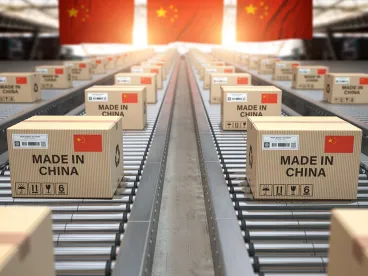Today, in a rare demonstration of bipartisanship, the U.S. Senate passed the Uyghur Forced Labor Prevention Act (the “Act”) – the text of which was a compromise between Senator Marco Rubio (R-Fla.) and Representative Jim McGovern (D-Mass.) – which had already passed the house on Tuesday of this week. Over the years, including most recently in February 2021 (see our post here), we’ve seen different attempts from both chambers to pass legislation prohibiting the imports of goods from Xinjiang or the Xinjiang Uygur Autonomous Region (“XUAR”) – a region in China where, per the U.S. Department of Labor and media reporting, the Chinese government has detained and persecuted more than one million Uyghurs and other Muslim minorities. President Biden has signaled that he will sign this bill into law.
Background
In addition to numerous proposals to pass legislation from Congress, the Executive Branch (i.e., CBP) has tried to address the issue of imports coming into the United States made from forced labor. Since 2019, we’ve seen a number of Withhold Release Orders (“WROs”) issued against different XUAR-related products and companies. We have also seen greater scrutiny on imports coming from, or connected to, the XUAR.
The Act that passed today and WROs share one important element: they both presume that the imported product was made by forced labor, unless the importer can rebut that presumption. The difference, however, is that WROs are typically against a product and company (though we have seen broader WROs, e.g., cotton and tomatoes coming from the region) whereas the Act, which will soon become law, will essentially prohibit importers from importing all products from the region unless the importer can meet certain conditions.
Key Aspects of the Bill
-
Emphasis on Third Countries: The Act in different areas contemplates the possibility of companies using third country supply chains as a way to bypass/circumvent the ban on imports from XUAR. We should expect regulations and guidance documents addressing this point.
-
List Designation of Products and Entities: The Act requires the creation of several lists including: (1) a list of entities in the XUAR that mine produce, or manufacture wholly or in part any goods, wares, articles and merchandise with forced labor; (2) a list of entities working with the government of the XUAR to recruit, transport, transfer, harbor or receive forced labor; (3) a list of products mined, produced, or manufactured wholly or in part by the entities listed; (4) a list of entities that exported products mined, produced, or manufactured wholly or in part by the entities listed; (5) a list of facilities and entities, including the Xinjian Production and Construction Corps (“XPCC”), that source material from the XUAR or XPCC for purposes of any other government labor scheme that uses forced labor; (6) a list of high-priority sectors for enforcement, which shall include cotton, tomatoes, and polysilicon (which already has been subject to enforcement); and (7) an enforcement plan for each entity which may include issuing WROs and an enforcement plan for each high priority sector.
-
Importer Guidance: FINALLY! What importers have been asking for these past two years or so of uncertainty should finally materialize. The Act calls for the creation of guidance addressing the following: (1) due diligence, supply chain tracing, and supply chain management for compliance with forced labor due diligence obligations; (2) the type of evidence that demonstrates that a good was not made in the XUAR; and (3) the type of evidence that demonstrates that the good was not made from forced labor. The importer guidance will be key for importers rebutting the presumption that a good was made by forced labor, described below. This importer guidance—either in the form of regulations or official CBP guidance documents—will be issued within 180 days after the Act is signed into law.
-
Rebuttable Presumption: Although the Act presumes that any good manufactured in whole or in part in the XUAR or any entity designated is made from forced labor, this presumption may be rebutted if the U.S. importer has: (1) complied with importer guidance and (2) completely and substantively responded to all inquiries for information. Although this presumption has existed in previous pieces of legislation, what’s different here is that a U.S. importer will have guidance from the Government—in terms of documents, due diligence, etc.—on what it needs to have in order to rebut this presumption.
Our Takeaways and Recommendations
-
Supply Chain Due Diligence: Now is the time to be proactive if your company’s supply chain involves China, particularly in the XUAR. Consider conducting a supply chain audit or assessment with support from a third party. Audits may consist of onsite visits; worker and management interviews; assessment of labor brokers and recruiters; and presentation of final report and results. A comprehensive third party audit and on-site visits with suppliers abroad may not always be feasible, but a lighter-touch assessment involving questionnaires, high-level interviews, and document review could also prove useful in providing information and a high-level understanding of gaps and areas for enhancement. Consider ranking suppliers based on these assessments, so that your business teams can be empowered to work with suppliers that score the highest.
-
Relationships with Suppliers: When vetting your suppliers, ensure that forced labor is part of your diligence. Make sure your contracts with suppliers and sub-suppliers include explicit terms and conditions that prohibit the use of forced labor, a time frame by which to take corrective action if forced labor is identified, and the consequences that may arise if corrective action is not taken. To the extent that your existing contracts do not include such language, consider adding when you renegotiate or ensure that your suppliers agree to abide by your policies and code of conduct.
-
Mapping Your Supply Chain: Consider a supply chain mapping exercise to identify your suppliers, sub-suppliers and if possible assessing your supply chain to the raw materials level. This exercise, while certainly a challenge for companies with complex supply chains, will help you evaluate risks and focus your compliance efforts where most needed. In the event you face having to rebut the presumption, the exercise might be invaluable.
Co-authored by Jonathan Wang, a law clerk in Sheppard Mullin’s Washington, D.C. office.




 />i
/>i

